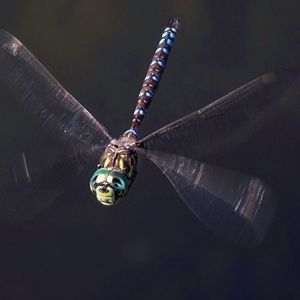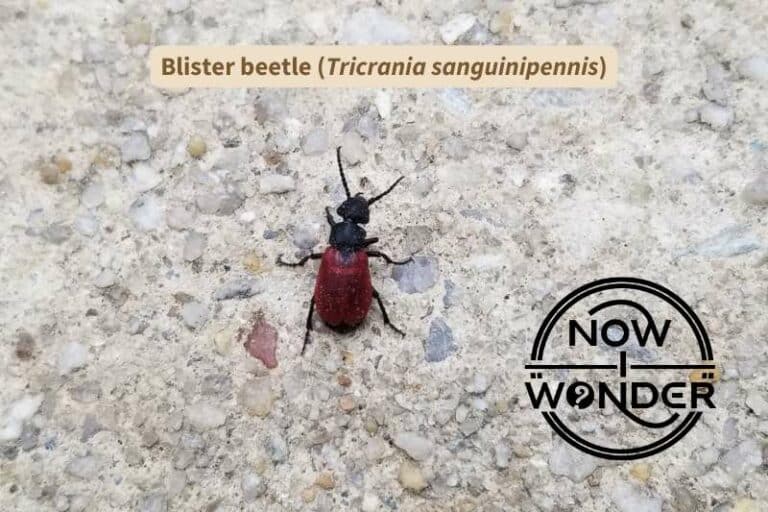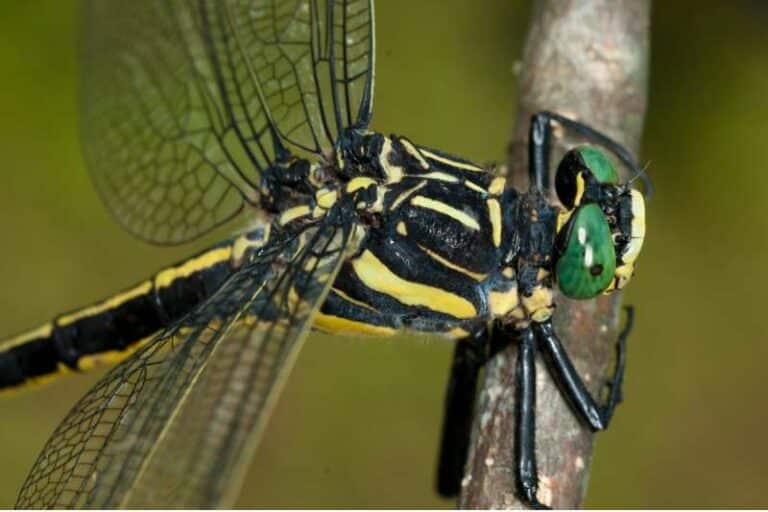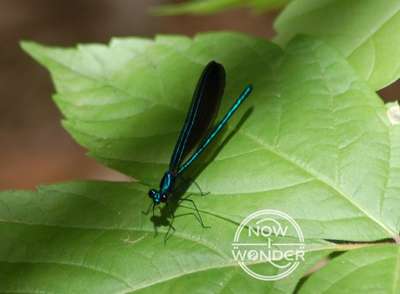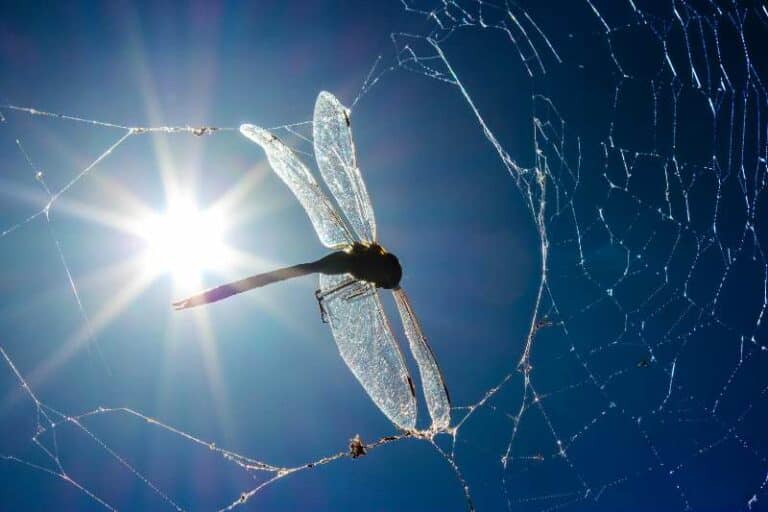Have you ever stomped an insect and noticed a strange, milky-looking substance mixed in with the bits of wing, antennae, and legs? Where is the bright red blood that we humans associate with injury? Do insects even have blood?
Insect blood is called “hemolymph”. Hemolymph functions similarly to the blood found in humans and other vertebrate animals. But unlike blood, hemolymph washes freely through insects’ bodies, is a bluish-green – rather than red – fluid, and in many species, contributes nothing to tissue oxygenation.
Arthropods like insects are fundamentally different from mammals like humans, cats, and dogs – even the fluid that flows through their circulatory systems to keep them alive is different. Read on to learn about insect blood and how it differs from the blood we are all used to.
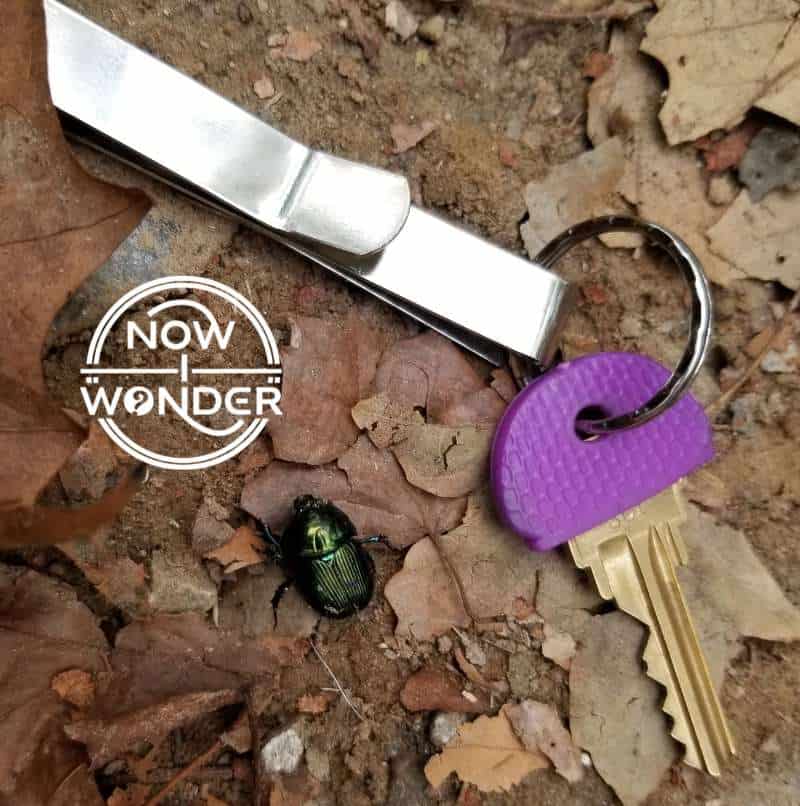
Blood vs. hemolymph
“Blood” is the correct term for the fluid which flows through the circulatory systems of vertebrate animals like mammals.
“Hemolymph” is the correct term for the fluid which flows through arthropod systems. Arthropods are those animals classified in phylum Arthropoda and includes animals with segmented bodies, hard exoskeletons, and jointed legs, like insects, insects, scorpions, crabs, and shrimp.
Function of hemolymph
Like humans, insects are multi-cellular creatures whose body tissues are made up of thick layers of packed cells. Individual cells need a steady supply of nourishment, electrolytes, hormones, vitamins, and oxygen to metabolize energy, and also need metabolic waste products and carbon dioxide removed to avoid poisoning.
All animals also need to remain hydrated, fight off bacteria, viruses, and other invading microorganisms, and clot off wounds to survive the immediate aftermath of traumatic injury.
Blood supports these actions these actions in humans; hemolymph performs them in insects.
Composition of hemolymph
Both hemolymph and blood are made up of water and a variety of specialized cells and chemicals. In both fluids, the water prevents dehydration and acts as a medium into which important nutrients and biochemicals dissolve for easy transport around the body. However, the types of cells and the chemicals dissolved in water are different in hemolymph than in blood.
Osmotic pressure
Osmotic pressure develops when two solutions of different concentrations are separated by a semipermeable membrane; osmotic pressure is higher on the side of the membrane with greater solute concentration, causing the solute to move to the side with lower pressure. In this way, important chemicals are transported into and out of cell membranes.
The osmotic pressure in most animals is created by inorganic ions such as sodium and chloride but in insects, organic molecules like free amino acids are more important (Barnes 1974).
Types of cells
Both vertebrate blood and insect hemolyph contain individual cells which perform specialized functions as they flow through the body but the type of cells in each are different.
A major component of vertebrate blood are cells called “erythrocytes”. Erythrocytes are mature red blood cells made in bone marrow and the average human has about five million blood cells per microliter of blood (Taber’s…1997). Each cells has an outer membrane and an internal framework made up of proteins and fats to which more than 200 million molecules of a special protein called “hemoglobin” attaches (Taber’s…1997).
Insects have neither bones nor bone marrow tissue; their hemolymph does not contain erythrocytes.
Hemolymph contains cells called “hemocytes”, which are part of insects’ immune systems. Hemocytes defend against infection by engulfing an invading microorganism and either destroying it outright in a process called “phagocytosis” or essentially walling it off from the rest of the insect’s body by forming a cyst or nodule (Resh and Carde 2009).
Vertebrate blood also contains phagocytic immune cells called neutrophils, monocytes, and macrophages, but these cells are different from the hemocytes found in insect hemolymph.
Oxygen-binding pigment
Another major difference between blood and hemolymph is how each carries oxygen.
In vertebrate blood, oxygen is carried by the hemoglobin molecules found by the millions in each erythrocyte. Hemoglobin is a complex protein made of two parts: an iron-containing pigment called “hematin” and a protein called “globulin”. Oxygen is attracted to hemoglobin and binds to it readily to form a combination molecule called “oxyhemoglobin”. Oxyhemoglobin is an unstable compound and releases its oxygen to cells as the erythrocytes swirl through the blood stream.
In arthropod hemolymph, oxygen is carried by a completely different molecule called hemocyanin (Rehm et al. 2012). Unlike hemoglobin, which is iron-based and red, hemocyanin is copper-based and therefore bluish-green.
However, not all insects have hemocyanin in their hemolymph and some have hemoglobin in their cells but not in their hemolymph.
Insects without hemocyanin oxygenate their body tissues by pulling air into a series of branching tubes called “trachae” through tiny holes in their exoskeletons called “spiracles”. Once inside, oxygen diffuses throughout, then carbon dioxide is collected in the trachae and pushed out through the spiracles. Their hemolymph still transports nutrients and other important biochemicals but does not carry or deliver oxygen.
Additionally, some species of insect have hemoglobin to help them access all available oxygen as hemoglobin transports oxygen efficiently; hemocyanin is approximately 5% less efficient than hemoglobin (Resh and Carde 2009). These include chironomid fly larvae (order Diptera, family Chironomidae, genus Chironomus), which often develop in polluted or oxygen-poor water, and backswimmers (order Hemiptera, family Notonectidae, genus Notonecta), which swim underwater.
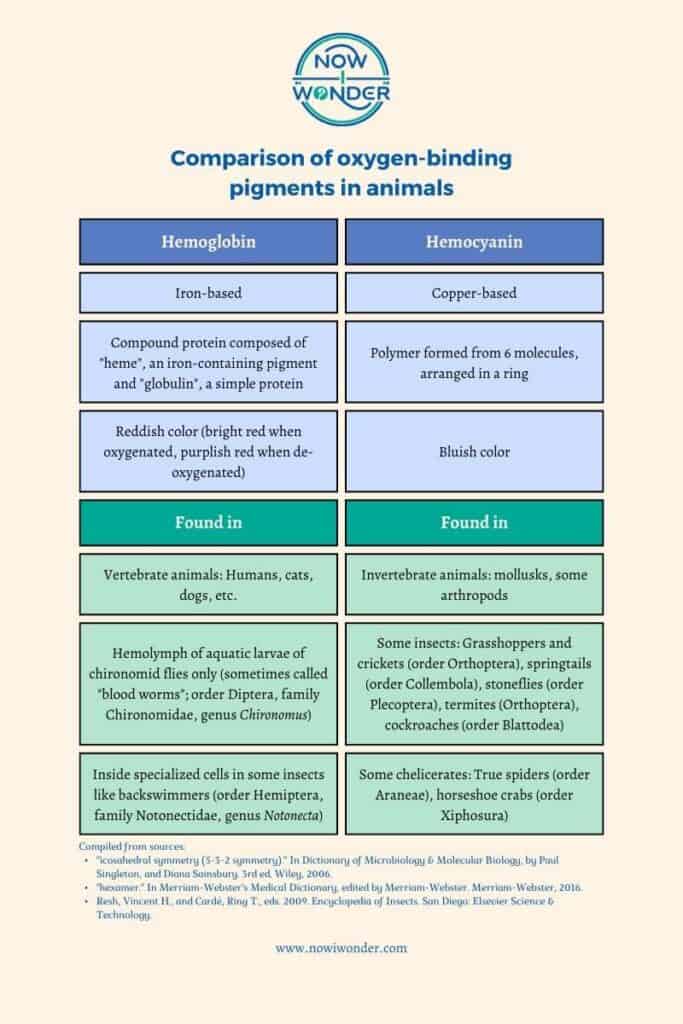
Movement throughout the body
Insects and other arthropods have open circulatory systems. Also called “lacunar” systems, these open circulatory systems are very different from the closed systems found in humans and other vertebrate animals.
Vertebrate circulatory systems are called “closed” because blood is fully contained within blood vessels (arteries, arterioles, capillaries, venules, and veins) during its passage through the body. Blood never leaks into the interstitial space (the area between cells) or mixes with interstitial fluid (the fluid between cells) unless the blood vessel wall is injured, allowing the contents to escape.
Insects – like all arthropods – have a totally different internal design. They have no veins and no physical separation between their hemolymph and their interstitial fluid (the fluid between individual cells).
Hemolymph leaves the heart through arteries but then washes freely into and through the body cavity, which is called a hemocoel. As it circulates through the hemocoel, the hemolymph releases nutrients, hormones, electrolytes, etc. to the cells and picks up carbon dioxide and other waste products. In insects whose hemolymph contains hemocyanin, the circulating fluid also delivers oxygen to cells for their aerobic metabolism.
Eventually, hemolymph collects into spaces called “venous sinuses” and returns to the heart through tiny holes in the heart wall called “ostia” (Pechenik 2000).
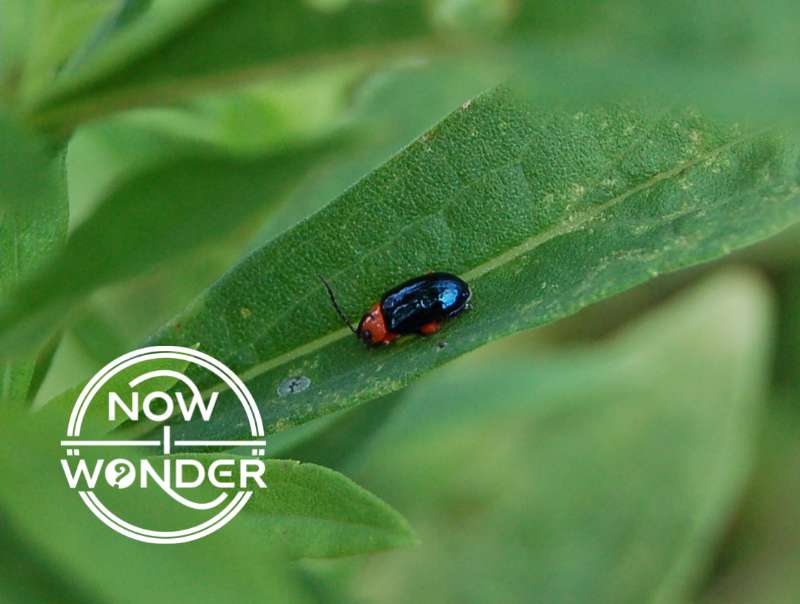
Blood-based antifreeze
Many insects have the ability to manufacture special “low-molecular-mass polyols (glycerol, sorbitol, and mannitol) and sugars (trehalose)” (Resh and Carde 2009), which act as antifreeze to lower the freezing point of the hemolymph and protect the insects from freezing to death.
Humans can’t manufacture these kinds of compounds in their blood; human cells are protected from ice crystal formation when exposed to freezing temperatures only through the continuous flow of warm blood through the blood vessels.
Reflex bleeding
Some insects deliberately release hemolymph when threatened in a defense strategy called “reflex bleeding” or “autohemorrhage”. Seen in insects such as ladybugs (family Coccinellidae) and leaf beetles (family Chrysomelidae), specially filtered hemolymph is pumped to the outside of the insects’ bodies through pores in their legs. This hemolymph usually contains a variety of noxious chemicals that may deter or sicken predators.
Relative volume
Animals like insects who have open circulatory systems tend to have much higher blood volumes relative to their body size than those with closed circulatory systems. In insects, hemolymph volume can be 20 – 40% of body volume, while in vertebrate animals, blood volume might make up 5 – 10% only (Hickman et al. 2006).
However, obviously (and thankfully), insects are much smaller than humans so while the insect’s body may contain proportionally more hemolymph, the average human has far more actual blood.
Conclusion
Insect hemolymph may not look very much like the bright red blood we’re all familiar with but it is as vitally important to insects as blood is to us. Hemolymph serves many of the same functions as vertebrate blood but is different in many ways. Looks can be deceiving but one can’t be too surprised that the differences between a grasshopper and a fuzzy kitten are more than simply skin deep.
Related Now I Wonder Posts
For information about insects in general, check out these other Now I Wonder posts:
- Do insects ever eat spiders? Part 1: Attacks from the air
- Do insects ever eat spiders? Part 2: Attacks from the ground
For more information about blood in the natural world, check out these other Now I Wonder posts:
References
Barnes RD. 1974. Invertebrate zoology. 3rd ed. Philadelphia (PA): W.B. Saunders Company.
Hickman CP Jr., Roberts LS, Larson A, L’Anson H, Eisenhour DJ. 2006. Integrated principles of zoology. 13th ed. New York (NY): McGraw-Hill Companies.
Pechenik JA. 1996. Biology of the invertebrates. 4th ed. New York (NY): The McGraw-Hill Companies, Inc.
Resh, Vincent H., and Cardé, Ring T., eds. 2009. Encyclopedia of Insects. San Diego: Elsevier Science & Technology.
Taber’s Cyclopedic Medical Dictionary. 1997. 19th ed. Philadelphia (PA): F. A. Davis Company.


